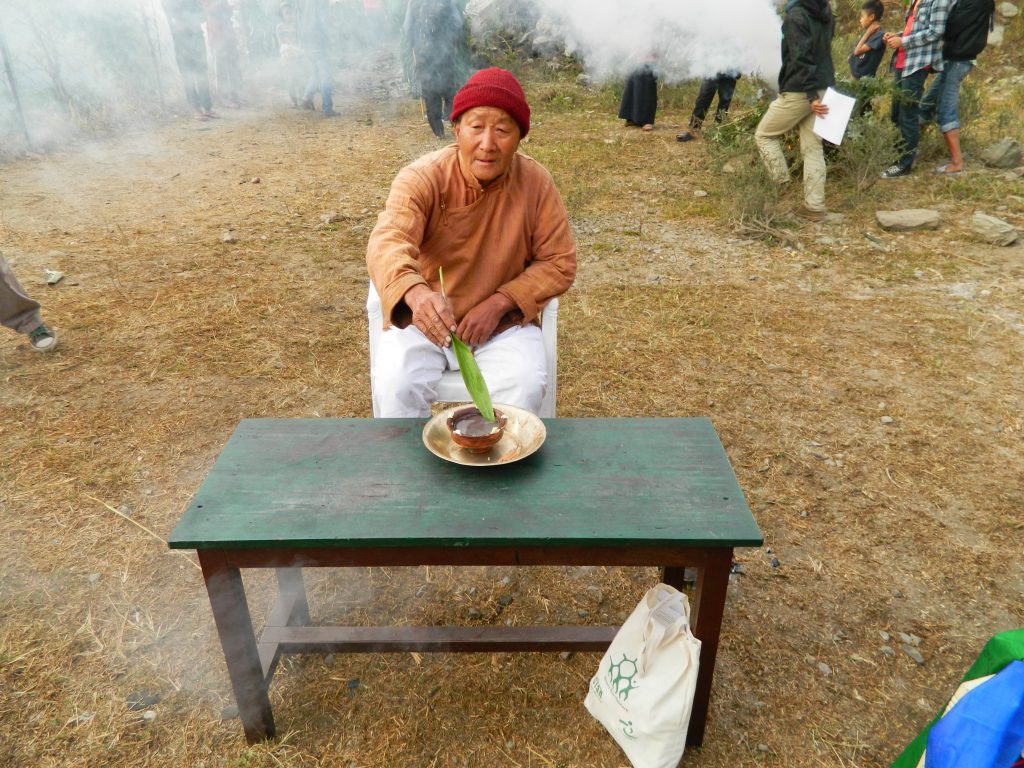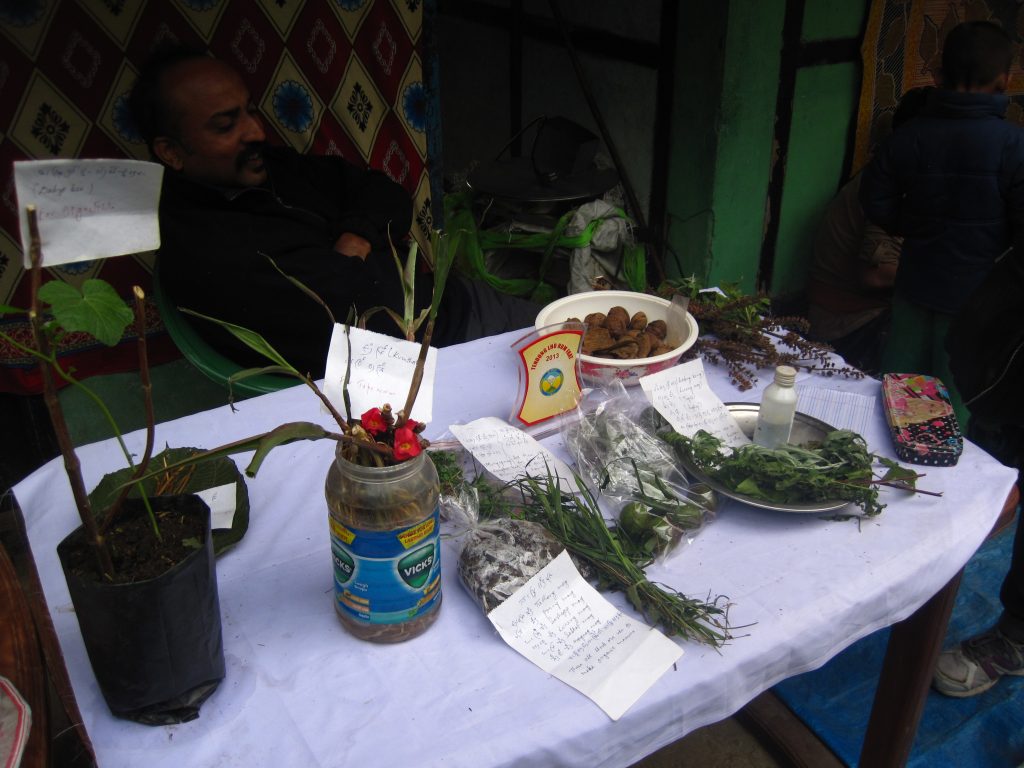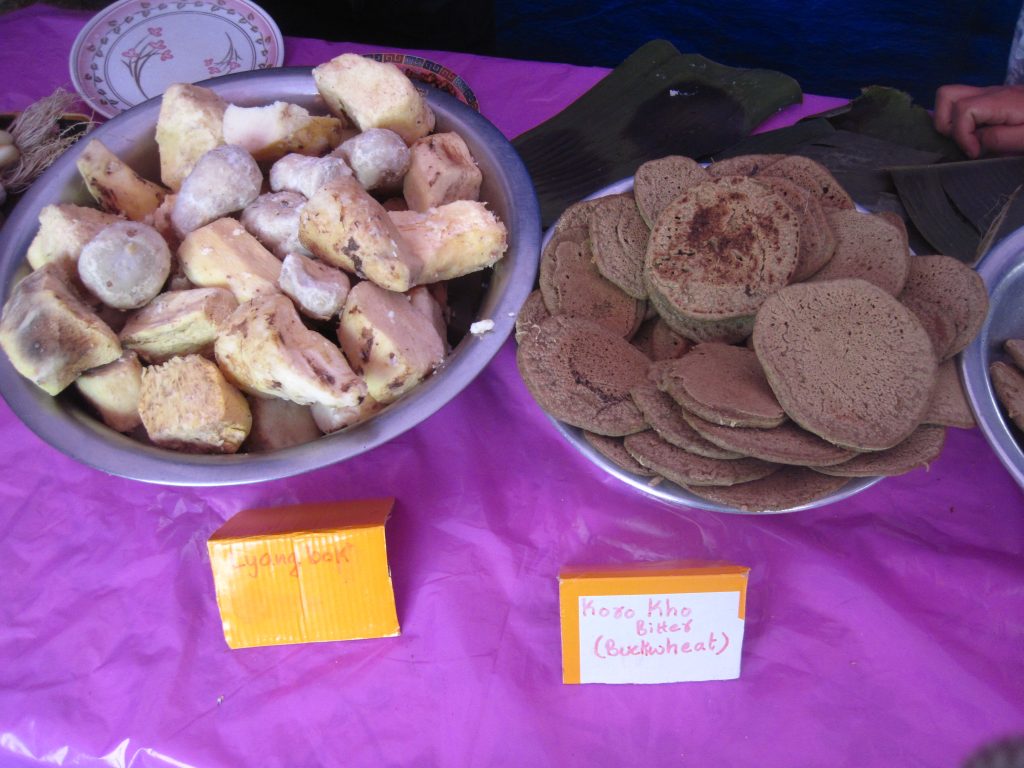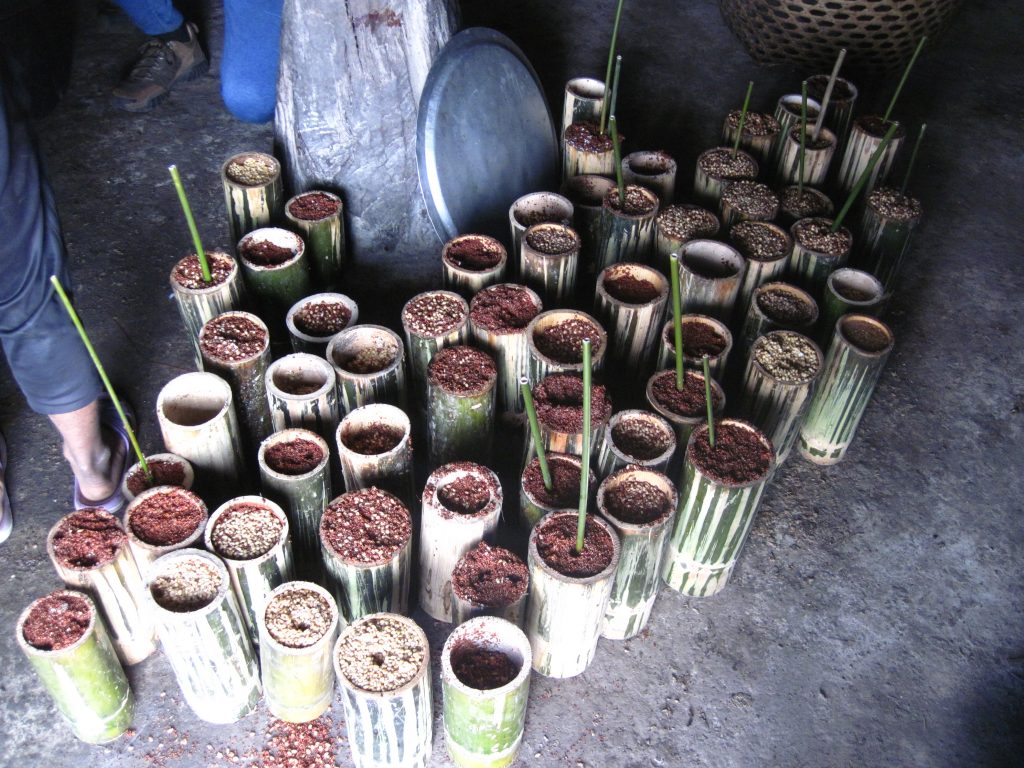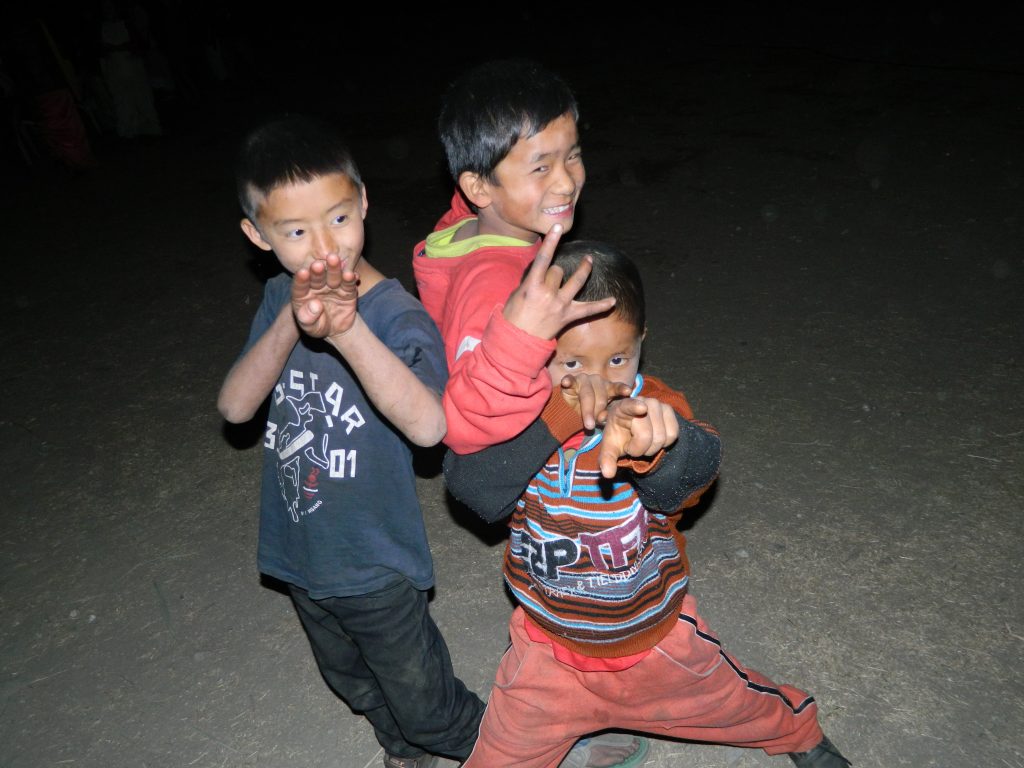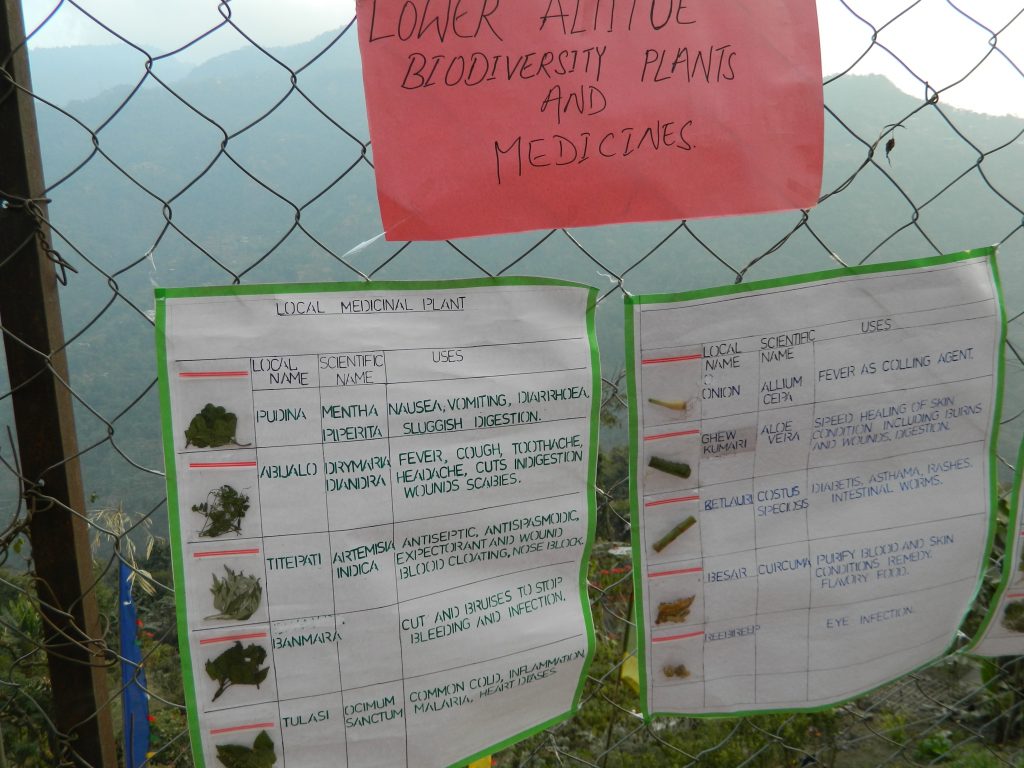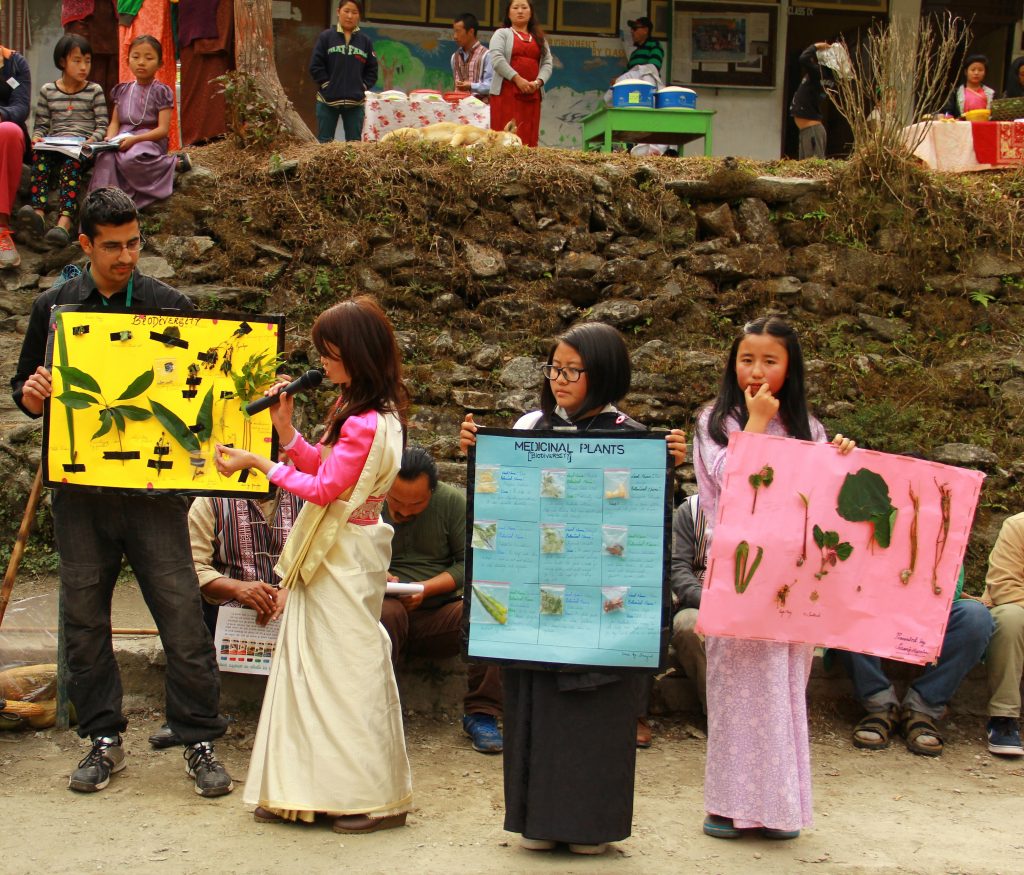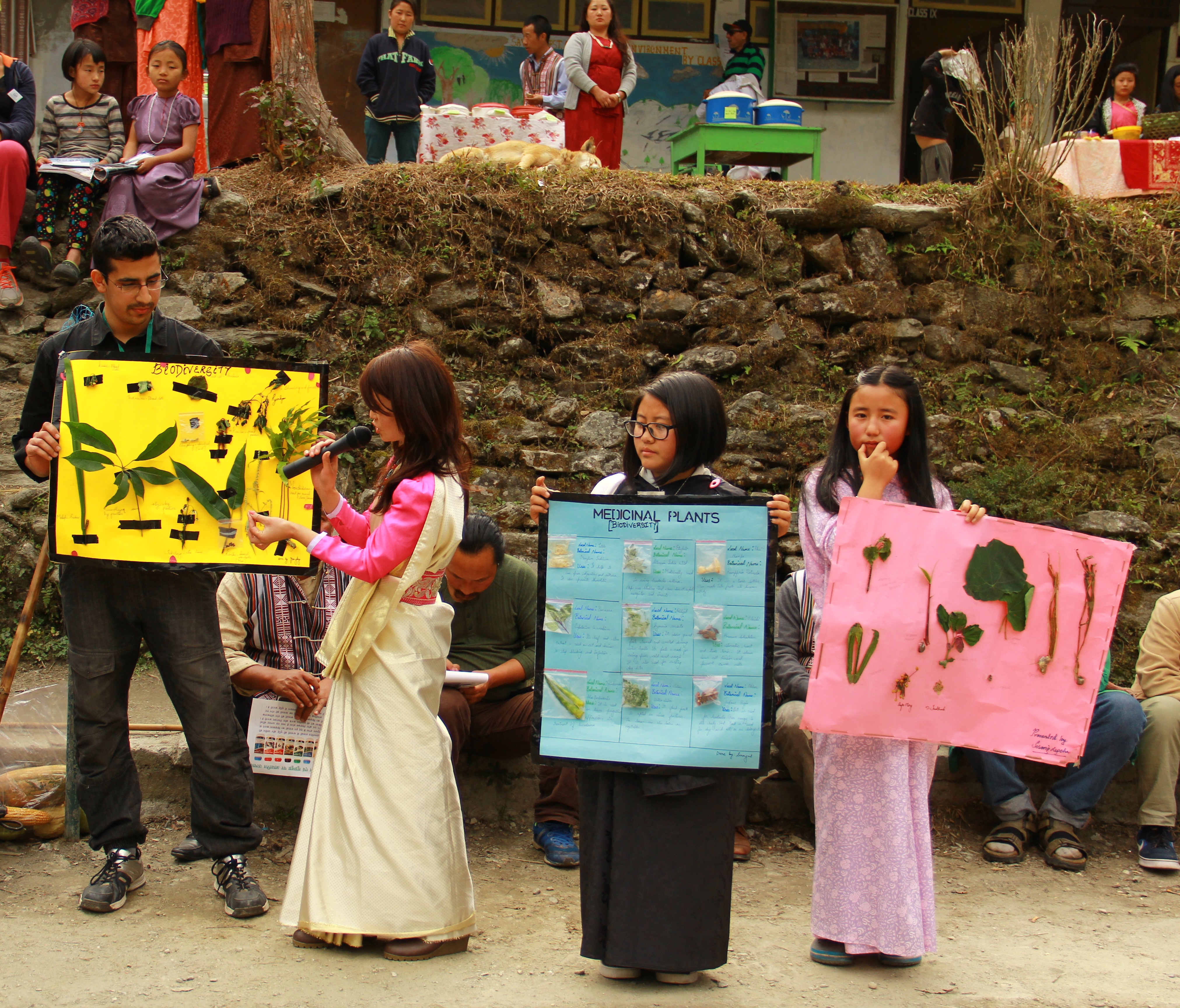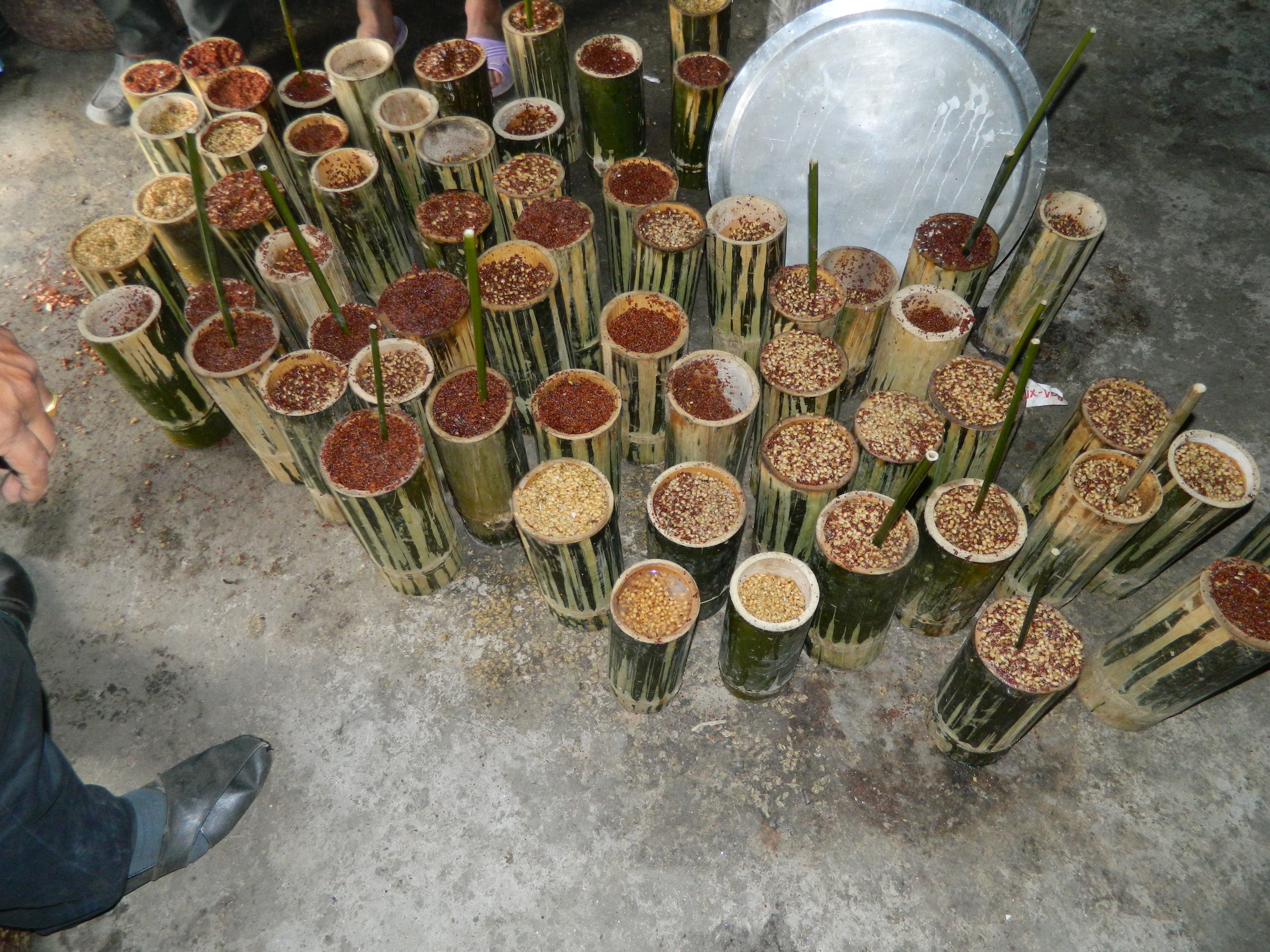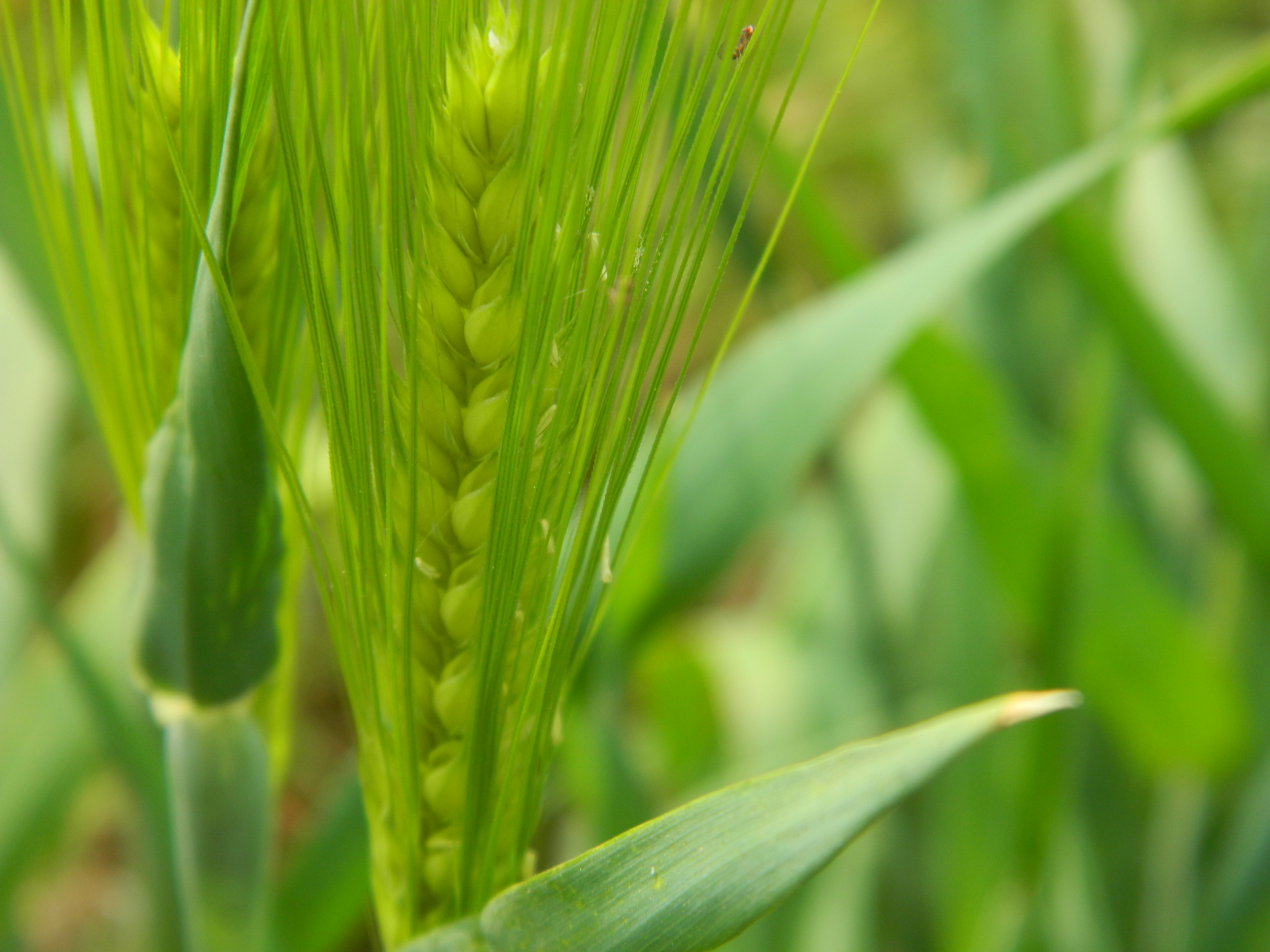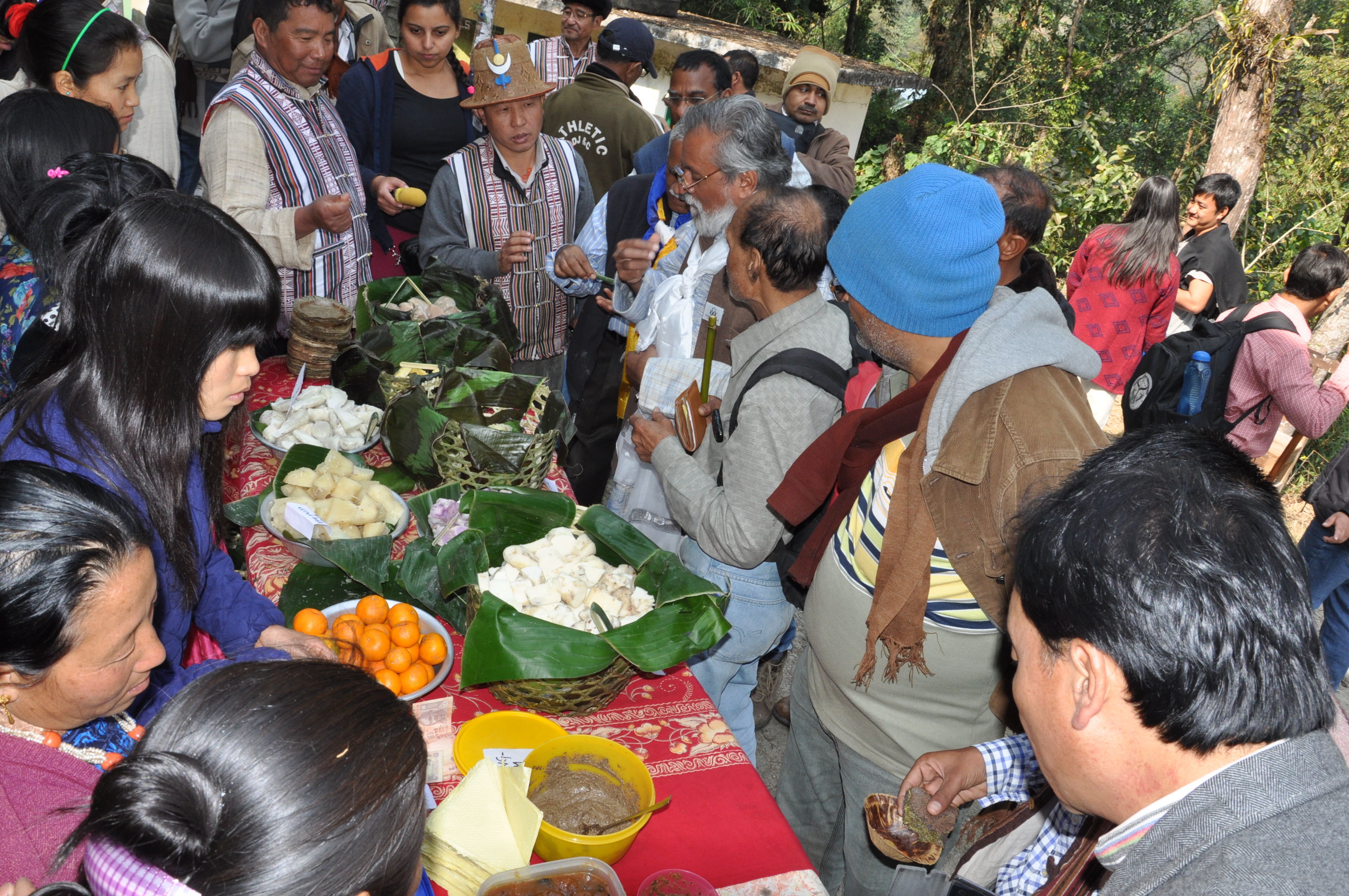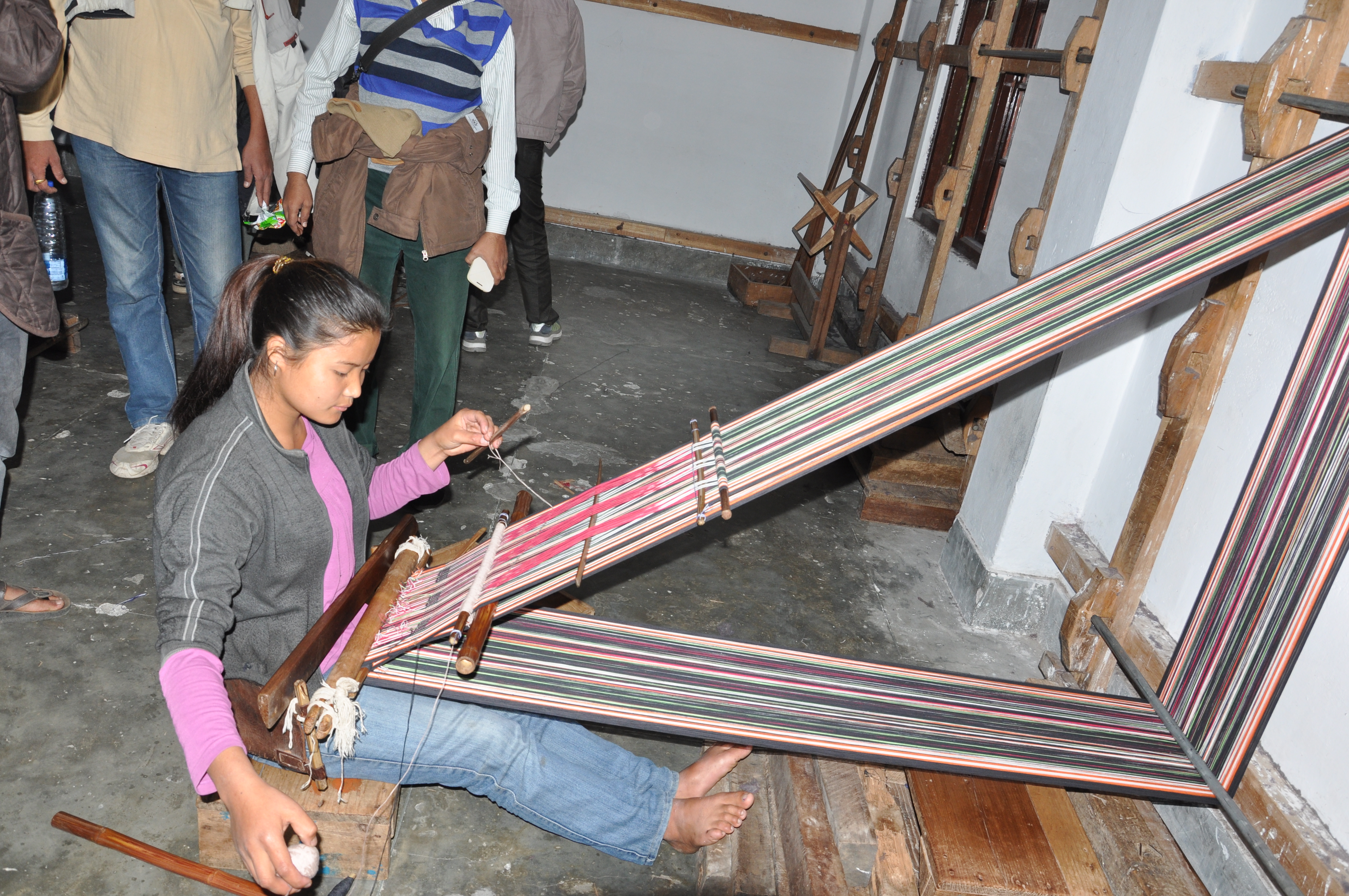Get Next Shodhyatra Update:
Phone:
079-27913293, 27912792
Email:
shodhyatra@sristi.org
34TH SHODHYATRA, SIKKIM
January 28 – February 3, 2015
THE LAND OF LEPCHAS
The 34th Shodhyatra organised in the mystic mountains of Dzongu region of North Sikkim from January 28 – February 3, 2015, witnessed the rich cultural heritage and traditional knowledge of the Lepcha community. The yatris travelled 110 kilometers amidst steep inclines and deep valleys covering 12 villages comprising 58 wards.
How would you charge your mobile phone in an interior village in North Sikkim, with an uncertain electricity supply and cloudy weather? A young boy Mayal Lepcha from the village came out with a brilliant idea of fitting a small generator in the water tap so that when water flows through it, one can charge mobile phone.
A similar idea was received from Bihar once but Mayal had no clue about it, he had never seen it. But that did not prevent him from imagining a new solution for a persistent local problem of irregular power supply. SRISTI gave him a small amount to make such a device. His confidence went up and the other children who came with him to Gor village, where we stayed for a night as part of the Shodhyatra, also got inspired.
A team of 77 Shodhyatris consisting of members from 14 different states of India and three different countries started their walk from Lum village in lower Dzongu on 28th January 2015. The yatris travelled about 110 kilometres amid steep inclines and deep valleys covering 12 villages comprising 58 wards. This region, inhabited by the Lepcha tribe, is protected— the territory has been designated as a special reserve since 1960 and requires special permission to enter. Most of the distance covered was through natural forests and old pathways. In every village, various activities like idea competitions with children, biodiversity competitions, traditional recipe competitions and cultural events took place.
The indigenous tribe ‘Lepcha’, meaning ‘children of the Rong (God)’, have their own script, believed to have been invented by scholar Thikúng Men Salóng. The Lepchas consider Mt. Kanchenjunga as their mother creator and worship her.
Agriculture is the main occupation of the Lepcha community. Cardamom and ginger are the two major cash crops that easily thrive in these sloped inclines. But, with change in temperature and rainfall patterns, the yield of cardamom is reducing and has become a major concern for Lepchas. Similarly, lack of snowfall has also led to a reduction in the yield of apples in the region. Lack of access to the markets for their local produce is another major concern, for which village-to-village knowledge transfer and lateral trading can help augment the local economy.
A large number of streams flow freely as not many water conservation structures have been built. The traditional Lepcha houses are built on nine pillars and have only three rooms, which include kitchen, living room and a temple. The traditional Lepcha houses have small doors so that people entering the house have to bend, as a sign of respect, before entering. The traditional houses, which were built to resist earthquakes, are slowly being replaced with modern designs and governmentsponsored houses.
Unlike adults, who learn to live with their problems, children are more restless and have given solutions to some of the problems they observe in and around their villages. In Dikchu, children of the village presented a cheerful cultural performance. The culinary and biological diversity as well as the rich knowledge shared by the children was impressive. The children had gone around the village talking to elders and documenting diverse uses of various plants and their parts. The yatris hoped that seeds of curiosity were sowed in them. A young boy, Soring Lepcha, in Pasingdong village, came up with an idea of installing water filters in the community taps, so that every single person in the community can drink clean water, as water filters are unaffordable for the community. Another idea that came from the same village was from Johney Lepcha who thought of making slippers from rubber and plastic waste for the poor, who cannot afford proper footwear.
Lyangsung Lepcha from Hee Gyathang Senior Secondary School suggested notice boards in villages to keep residents updated about news. Based on the idea, a ‘Honey Bee notice board’ was proposed for display of creative ideas of children, innovations, unique experiments by farmers and good herbal practices. More ideas were discovered through idea competitions in every village visited by the Shodhyatris in the Dzongu region. Selected ideas from each village were appreciated and children were felicitated with certificates and gifts at village gatherings. These ideas will be considered for selections in IGNITE 2015 awards.
A biodiversity competition was also organised in each village during the Shodhyatra, in which school children documented use of various plants known to them and the elders in their village. The plants, from both lower and higher altitude were segregated and their uses were documented separately by SRISTI lab. The team met herbal healers who had unique knowledge about various medicinal plants. For instance, in Shagyong village, there was a herbal healer, who had made organic pesticide from seven different plants. This pesticide can be promoted by the Sikkim Government for use on a large scale. Similarly, in Lingdong village, we found a herbal healer from Nepal, Prithiman Chettri, who used various combinations of medicinal plants for different ailments. He had about 10 unique combinations for orthopaedics— both edible and for application on joints— to provide relief from pain. The rich biodiversity is primarily due to the pristine virgin forests, which are worshipped and conserved by the Lepchas over the years. The officials have not interfered much with the natural forests and preserved the rich ecological niche without significant disturbance. The nature worship of Lepchas was visible through their cultural songs and interesting folk stories.
The exotic taste and traditional recipes of Lepcha people was a treat for the Shodhyatris. In every village, SHGs had prepared various recipes made out of millets, yam, tapioca, buckwheat, tubers, roots and various locally found plants. The recipes made were organic, highly nutritional and, in some cases, of medicinal value. A cup of walnut tea, consumed with a pinch of salt instead of sugar, refreshed the Shodhyatris after their long walks, daily. The recipe can be helpful for diabetic patients in cities. The traditional dish of the Lepchas called ‘khuri’ is primarily made from millets. However, a number of different materials and recipes were used to prepare khuri and its stuffing. There were stalls put up to showcase their organic recipes, which were made of bamboo and other plants. The use of plastics was minimal and the stalls were beautifully decorated. Another interesting observation was the use of bamboo cups for drinking tea and water. In some villages, even the plates and spoons used to serve meals, were made of bamboo and banana leaf. The Dzongu region is gifted with one of the best orange varieties in the country. Lum village, from where the Shodhyatra began, gets its name from shalam, meaning orange in the local language. There were different kinds of organic wines, such as, ‘Pocket Wine’, which is made out of fermented fruit and can be easily carried in a pocket. Several types of chutneys, like the unique walnut chutney, and pickles from rare plants were on display.
A large number of handicraft products, made out of bamboo and other products, were also on display. Even though the Lepchas are now moving out of their region for work and studies, they are deeply rooted and seemed proud of their heritage. In every village, men, women and children wore traditional, handloom-made Lepcha dresses, especially the khada (a traditional cloth worn around the neck), to welcome Shodhyatris. The elements of men’s traditional attire include thogro and gyadhor. The women’s dress includes dumvon and ashyan. We came across the traditional Lepcha hat called sumok-thyaktuk, which is unique, and the oldest craft form of the Lepchas. The hat is intricately woven with ru or cane (Calamus acanthospathus), Po-young which is the local bamboo (Cephalostachyum capitatumum). Each part of the hat and its artistic design holds its own traditional meaning and significance and wearing it for a wedding, worship and festivals is mandatory for the tribe. The hat takes almost two months to complete and costs around Rs 15,000.
Though the major religion of the Lepcha community is Buddhism, it is practised together with a nature-centric faith called Bongthingism, where the main roles are occupied by the Shamans— Bongthing and Mun. In some villages, traditional Lepcha songs were sung using the local musical instruments tungdup and flute.
Cleanliness came across as a deeply ingrained value in the Lepcha society. There were dustbins all through the yatra route. The role of the panchayat in the development of the region was another important lesson. Schools and aanganwadis in the region were functioning effectively. The Sikkim state government provides fellowship to the children to study in different parts of the country. The headmaster of the local school appreciated this initiative but regretted that not many came back to serve their region. Majority of the functionaries and teachers appeared to be from other regions of the state.
In many schools, the number of girls is about one third or less, exceptions apart. There were three reasons that could be responsible. Despite 200 – 300 students in different schools, there were only five toilets for girls and some of them may be out of order at any time. Very few schools have residential facilities for girls and the transportation facilities are woefully inadequate, although there are tremendous efforts being made in building pathways. The local SDM, Mr. Dorjee had been staying with us in the villages and walking along. In none of the 33 Shodhyatras before such a thing has ever happened. It shows tremendous responsiveness of the administration and their interest in learning together through Shodhyatra. P.D. Rai, a Member of the Parliament and a distinguished alumnus of IIM, Ahmedabad had organised our meeting with the state administration. At Sangiong village, the head of district panchayat, Anguli Lepcha attended the meeting and showed a very interesting museum of Lepcha tribal artefacts in the school building. In 2013, Hee Gyathang Gram Panchayat Unit (GPU), which falls under Dzongu constituency, was declared as the first alcohol-free GPU in Northern district.
The organic farming culture of the region was quite inspiring. A platform for SHG’s will help it to spread to different regions. However, there is no food processing or other kinds of value addition for locally grown fruits and vegetables. National Innovation Foundation has decided to engage with the local communities and unleash a grassroots entrepreneurship programme with local youth.
The Lepcha community believes in providing equal opportunities and fair treatment to men and women. The community takes pride in its culture and in conserving nature. Life expectancy, especially of men, is short among this community. A doctoral student from Andhra Pradesh has carried out a study on their life expectancy but the results are yet to be studied closely.
Shodhyatra is a journey of exploration for the search of knowledge, creativity and innovation at the grassroots in the most remote parts of the country. The 34th Shodhyatra in Sikkim was an attempt to reach out to one of the most culturally rich regions in the country.
FLICKR GALLERY
